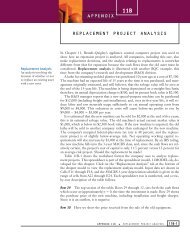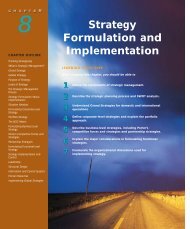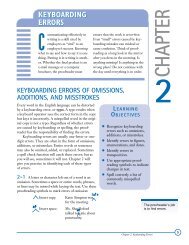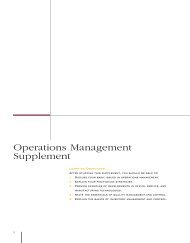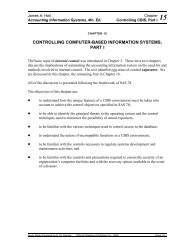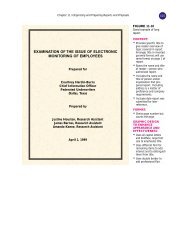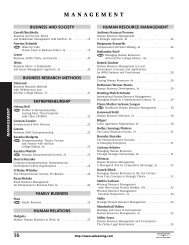The Keynesian Cross
The Keynesian Cross
The Keynesian Cross
You also want an ePaper? Increase the reach of your titles
YUMPU automatically turns print PDFs into web optimized ePapers that Google loves.
<strong>The</strong> <strong>Keynesian</strong> <strong>Cross</strong> 5<br />
means it depends on income. <strong>The</strong> induced consumption is the portion that’s equal to 75 percent<br />
of income.<br />
What is the total amount of expenditure in this economy? Since we’ve assumed that investment,<br />
government purchases, and net exports are zero, aggregate expenditure is just equal to the<br />
amount of consumption spending represented by our consumption function.<br />
Equilibrium in the <strong>Keynesian</strong> Model<br />
<strong>The</strong> next part of the <strong>Keynesian</strong>-cross model is to examine what conditions are needed for the<br />
economy to be in equilibrium. This discussion also tells us why it is called a <strong>Keynesian</strong>-cross<br />
model. <strong>The</strong>re are two parts to determining equilibrium: (1) we need to show that income equals<br />
output in the economy; and (2) we need to show that in equilibrium, aggregate expenditure (or<br />
consumption in this example) equals output. First, income equals output because people earn<br />
income by producing goods and services. For example, workers earn wages because they produce<br />
some product that is then sold on the market, and owners of firms earn profits because the products<br />
they sell provide more income than the cost of producing them. So any income that is earned<br />
by anyone in the economy arises from the production of output in the economy. So, from now on,<br />
we’ll use this idea and say that income equals output; we’ll use the terms income and output interchangeably.<br />
Another way to remember this is to refer to the circular flow diagram. <strong>The</strong> top half<br />
(output) is always equal to the bottom half (income- the sum of wages, rents, interest payments,<br />
and profits).<br />
<strong>The</strong> second condition needed for equilibrium (aggregate expenditure in the economy equals<br />
output) is the distinctive feature of the <strong>Keynesian</strong>-cross model. Just as income must equal output<br />
(since income comes from selling goods and services), expenditure equals output because people<br />
can’t earn income until the products they produce are sold to someone. Every good or service that<br />
is produced in the economy must be purchased by someone or added to inventories. This gives<br />
rise to our next graph, Figure 3, which plots aggregate expenditure against output.<br />
As you can see, it’s a 45-degree line (slope = 1). <strong>The</strong> 45-degree line shows that the number<br />
on the horizontal axis, representing the amount of output in the economy, is equal to the number<br />
on the vertical axis, representing the amount of aggregate expenditure in the economy. If output<br />
is $5 trillion, then in equilibrium, aggregate expenditure must equal $5 trillion.<br />
What would happen if, for some reason, output were lower than its equilibrium level, as<br />
would be the case if output were Y 1 in Figure 4?<br />
Looking at the vertical dotted line, we see that when output is Y 1 , aggregate expenditure<br />
(shown by the consumption function) is greater than output (shown by the 45-degree line). This<br />
amount is labeled the distance AB on the graph. So people would be trying to buy more goods and<br />
services (A) than were being produced (B). This would cause producers to increase the amount of<br />
production, which would increase output in the economy. This process would continue until output<br />
reached its equilibrium level, where the two lines intersect. Another way to think about this<br />
disequilibrium is that consumers would be buying more than is currently produced. This would<br />
mean inventories on shelves and in warehouses would be decreasing from their desired levels.<br />
Clearly, profit-seeking business people would increase production to bring their inventory stocks<br />
back up to the desired levels. In doing so they would move production to the equilibrium level.<br />
Similarly, if output were above its equilibrium level, as would occur if output were Y 2 in<br />
Figure 4, economic forces would act to reduce output. At this point, as you can see by looking at<br />
the graph above point Y 2 on the horizontal axis, aggregate expenditure (D) is less than output (C).<br />
This means people wouldn’t want to buy all the output that is being produced, so producers would<br />
want to reduce their production. <strong>The</strong>y would keep reducing their output until the equilibrium level



